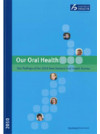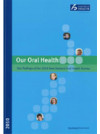The 2009 New Zealand Oral Health Survey is the first nationwide survey to collect information on the oral health status of New Zealand adults and children in over 20 years.
The survey was carried out from February to December 2009, and consisted of face-to-face interviews and dental examinations. Overall, 4906 New Zealanders participated in the survey interview, with 3196 respondents completing a dental examination. The survey had good representation of Māori, Pacific and Asian people. The survey was a follow-up to the 2006/07 New Zealand Health Survey, and was a collaborative project between the Ministry of Health, Defence Dental of the New Zealand Armed Forces, the New Zealand Dental Association, and the Accident Compensation Corporation (ACC).
This report presents key clinical and self-reported findings from the survey, focusing on oral health status, protective factors and service utilisation among the New Zealand population.
Key Results
Key findings of the survey include the following.
- Oral health of New Zealanders has improved over time. The prevalence of total tooth loss has decreased dramatically among New Zealand adults since 1976, and adults are retaining more of their natural teeth into older age. Among children, the proportion of 12–13-year-olds who are caries-free almost doubled between 1988 (29%) and 2009 (51%).
- However, dental decay remains the most prevalent chronic (and irreversible) disease in New Zealand, and disparities still exist in oral health in New Zealand. In 2009, one in three adults had untreated coronal decay, and one in ten had root decay. There was evidence of active decay in all age groups, including older age groups.
- Children and adolescents had relatively good oral health, as well as good access to oral health care. Overall, one in two children and adolescents aged 2–17 years were caries-free, and four in five had visited a dental professional in the previous year. Māori and Pacific children and adolescents aged 2–17 years had poorer past-year access. Additionally, worse oral health outcomes were experienced by Māori and Pacific children and adolescents, and children and adolescents living in areas of higher socioeconomic deprivation.
- Among adults with natural teeth, one in four (23%) had experienced trauma to one or more of their upper six front teeth, as had one in six (16%) children and adolescents aged 7–17 years.
- There was clear evidence of unmet need for dental care among adults, with nearly half of adults feeling they currently needed dental treatment. In the past year, nearly half of all adults had avoided dental care due to cost and one in four adults had gone without recommended routine dental treatment due to cost.
- The majority of adults usually used oral health services when they had a dental problem, rather than visiting for routine check-ups. People who visited only for a dental problem had significantly worse oral health than regular users.
- In adults, poorer oral health and lower dental service attendance rates were found in particular among men, younger adults (aged 25–34 years), Māori, Pacific peoples, and people living in areas of higher socioeconomic deprivation.
- Dental problems have an indirect cost to society, with one in ten adults aged 18–64 years having taken, on average, 2.1 days off work or school in the previous year due to problems with their teeth or mouth.
- Adults and children are recommended to brush their teeth twice daily with standard (1000 ppm or greater) fluoride toothpaste. The survey showed that about two in three adults met this toothbrushing recommendation. About two in three children and adolescents brushed their teeth twice a day; however, less than one in two children and adolescents brushed twice daily with standard fluoride toothpaste, as per the Ministry recommendations.
- While the survey was not designed as an in-depth water fluoridation study, analysis showed that children, adolescents and adults living in fluoridated areas had significantly less lifetime decay than those in non-fluoridated areas, and there were no significant differences in the prevalence of fluorosis (a possible side-effect of having too much fluoride during early tooth development) between people living in fluoridated areas and those in non-fluoridated areas.
- Compared with Australian adults, New Zealand adults had poorer oral health across a range of clinical oral health indicators, and were also less likely to have visited a dental professional in the previous year.


